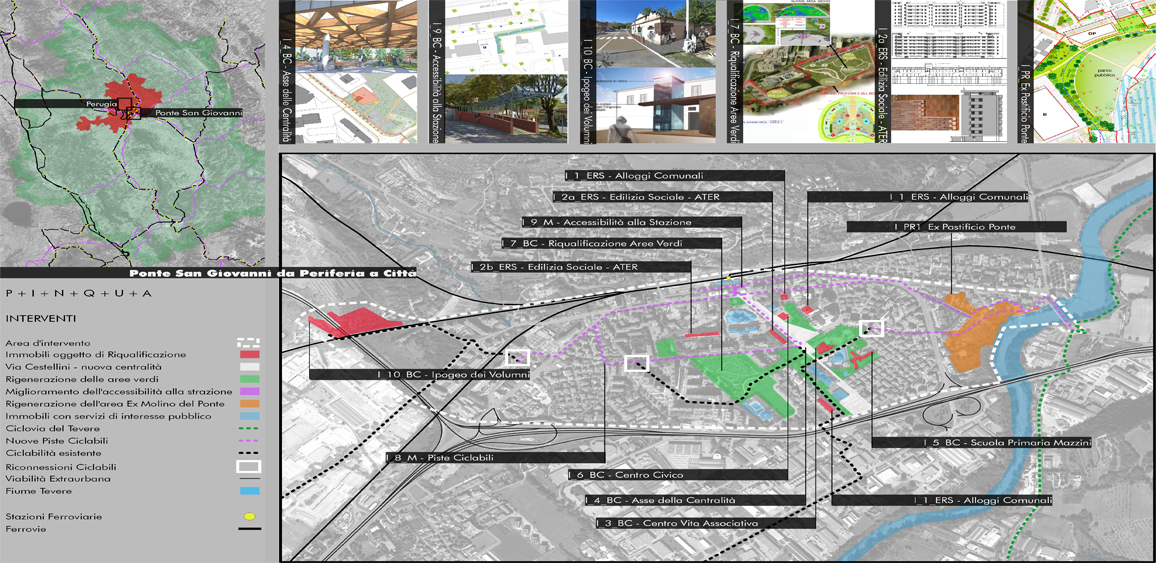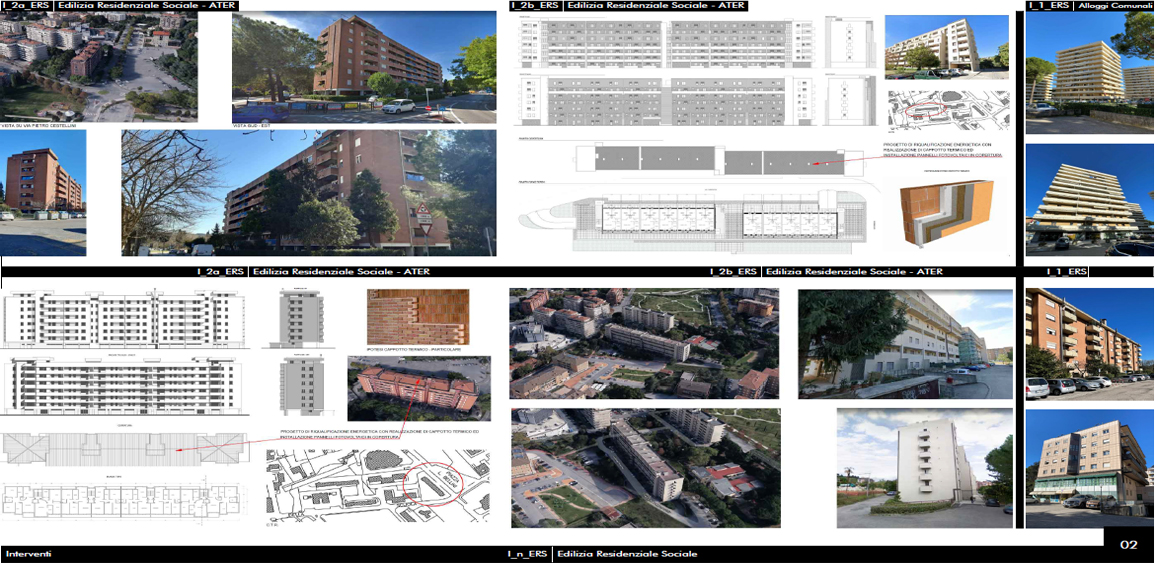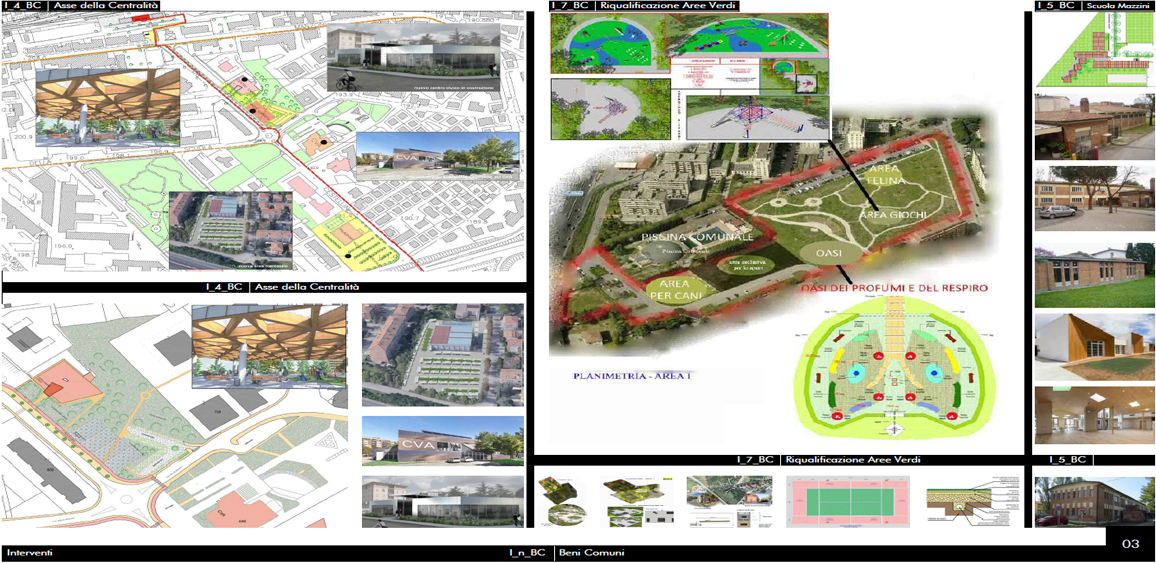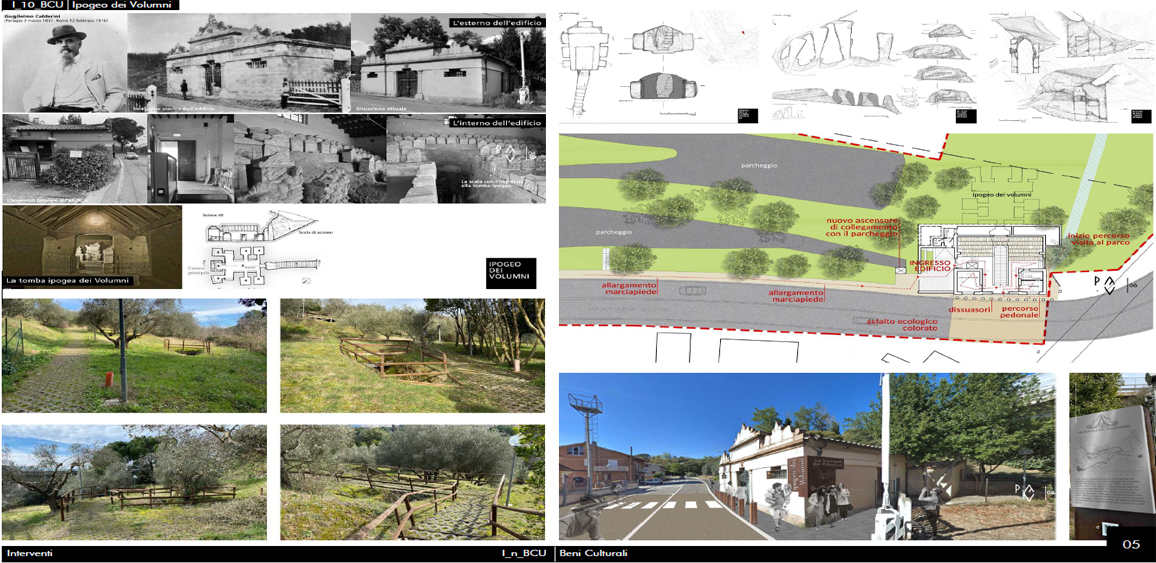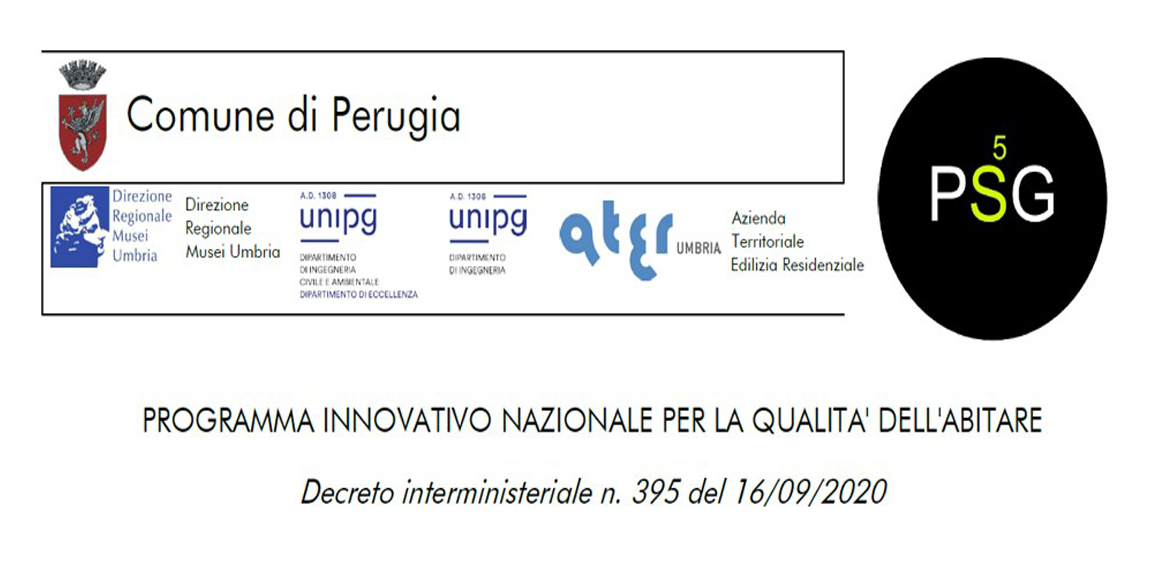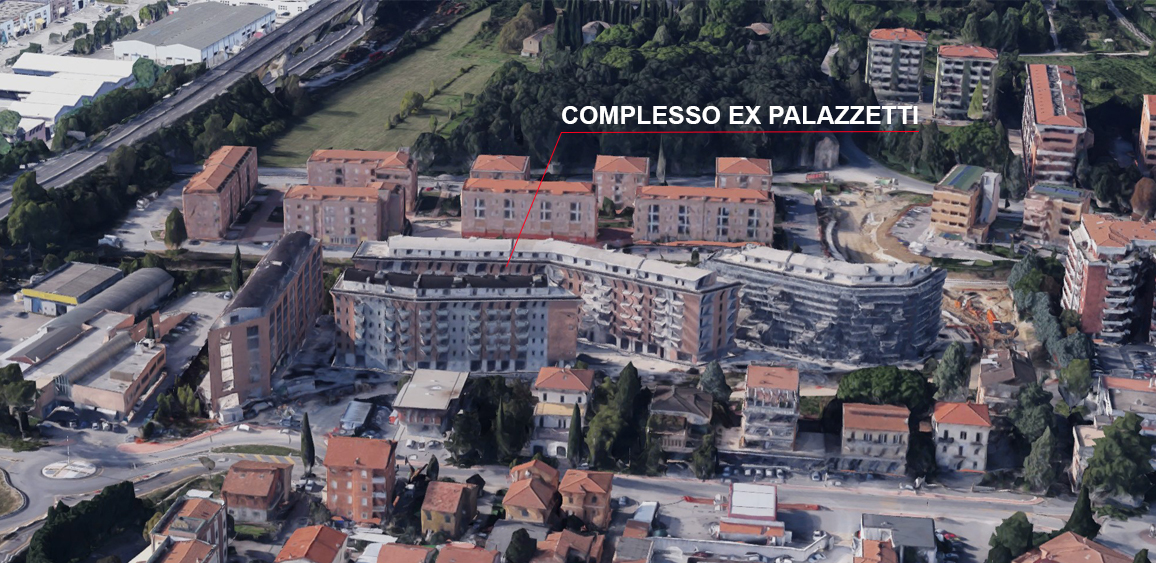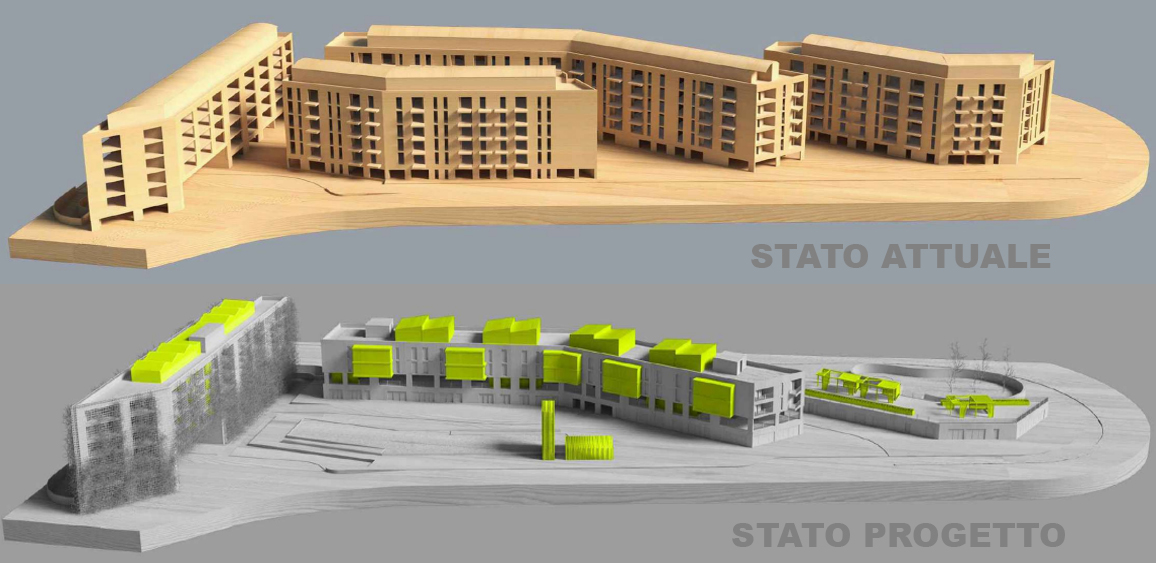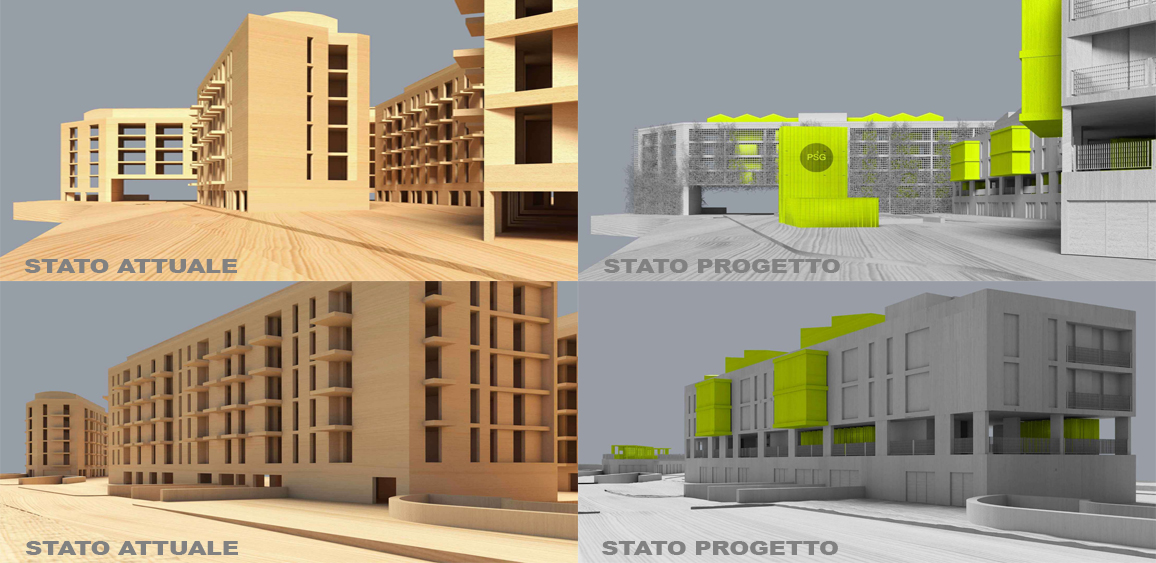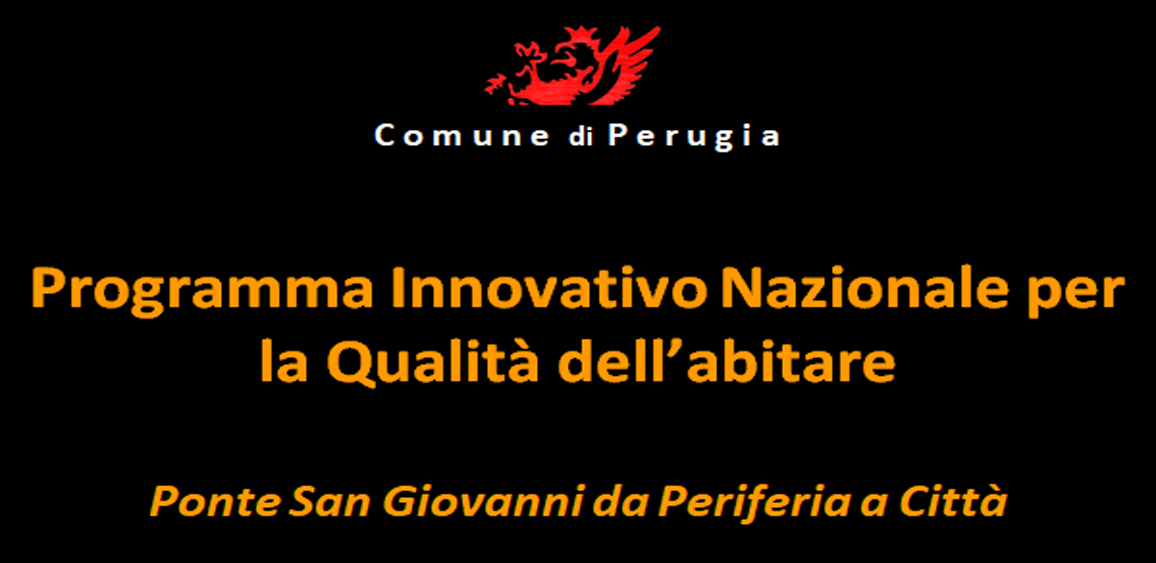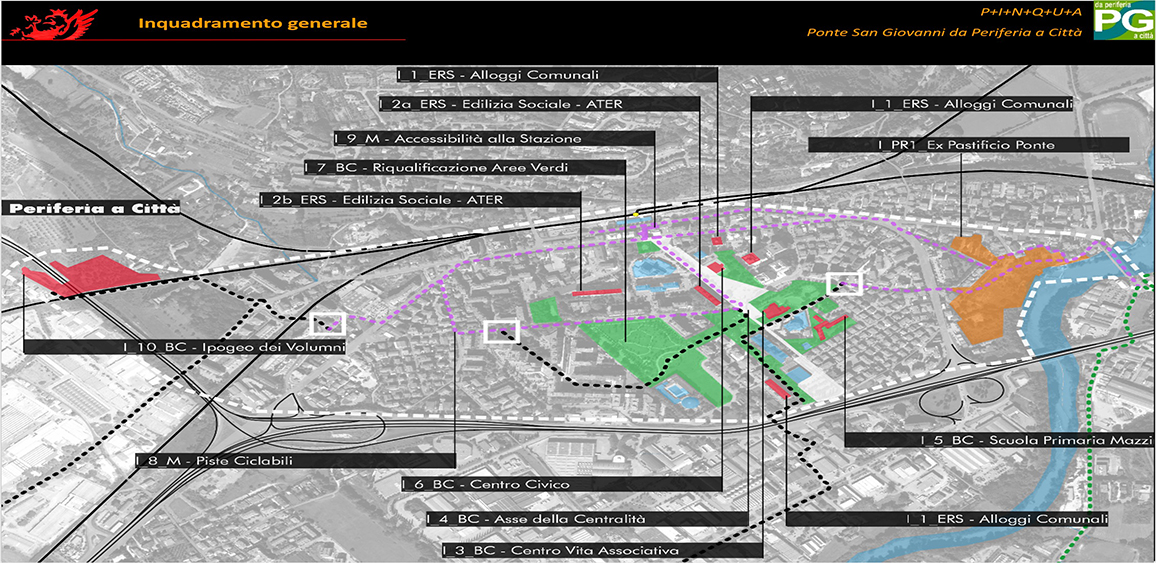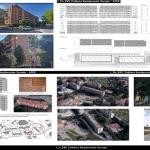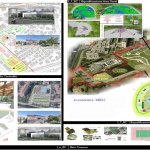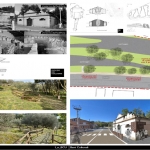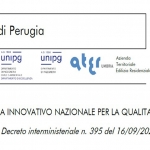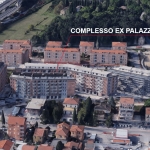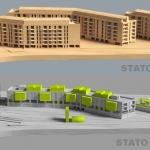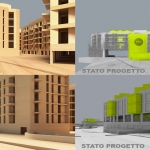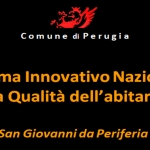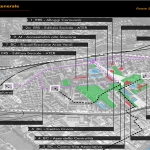Ponte san Giovanni is a settlement situated on the banks of the Tiber river at about 7 km from the center of Perugia, that in a bit more than fifty years reaches 20.000 inhabitants becoming one of the most populous quarters of the city. The demographic development of the district, grown in a flat area between the river Tiber, the railway line and a road system of national interest such as the E45, has been developing at the same time with the development of industrial, commercial and, more recently, services, accompanied by a significant building activity of private and public initiative, rather chaotic. In the course of the years 2000 the quarter has known the failure of important projects of restructure of disused industrial sites that have scarred the urban fabric. The presence of huge uncompleted buildings in the middle of the urban fabric of the district, among which the major one is the former Palazzetti complex, are an open wound that needs to be healed to stop the degradation and improve the livability of the urban area of Ponte San Giovanni.
The two Programs for the quality of living presented by the Municipality of Perugia following the call for projects of the Ministry of Infrastructure, and both admitted to funding, are an excellent opportunity to heal one of the open wounds in the fabric of the district (recovery of the former Palazzetti district, Pinqua proposal called “PS5G”) and to realize that “multiplicity of interventions aimed at the reconnection of public spaces, at the qualification of the green structure, of the pedestrian and cycle paths, of the public equipment” cited as one of the strategies of the PRG for the district of Ponte San Giovanni and never implemented (Pinqua “Ponte San Giovanni from periphery to city”).
Essential features Pinqua “Ponte San Giovanni from Periphery to City”
A series of small-medium sized, closely connected interventions aimed at: redevelop and make efficient the heritage of public residential housing of Ater and the Municipality; redevelop and connect the system of green areas; create a network of bicycle and pedestrian paths; redevelop and shape the central axis of Via Cestellini; improve accessibility to the railway station from the center of the neighborhood; regenerate public buildings of the CVA and the school; improve the system of recycling; improve the energy efficiency of the neighborhood through the creation of “energy communities; redevelop and enhance an Etruscan archaeological site of national importance as the necropolis of Volumni”.
Essential features Pinqua “Ps5G”.
Rehabilitation of a building complex in a state of abandon called ex Palazzetti. It provides for the purchase of the entire building complex by Ater (implementing party of the intervention) and its recovery with the aim of creating a neighborhood model for the high quality of living, creating a mix of social housing and rent agreed, commercial spaces, socio-cultural services district. A Sustainable, Social, Smart, Experimental, Healthy neighborhood, which are in the contemporary world synonymous with high quality housing: hence the reasons for the motto “PS5G”.
Italiano
